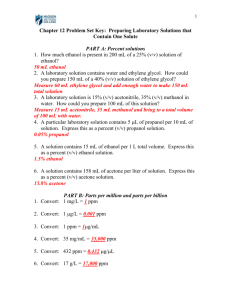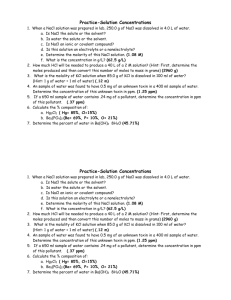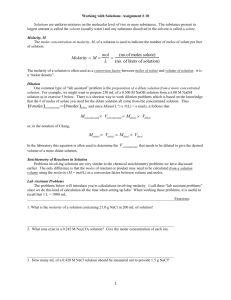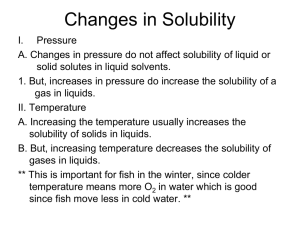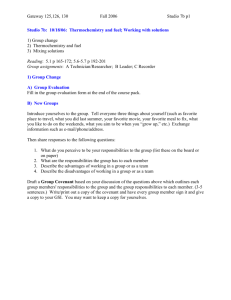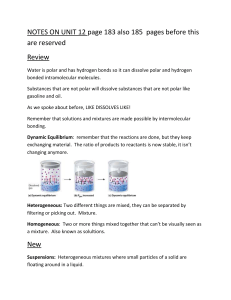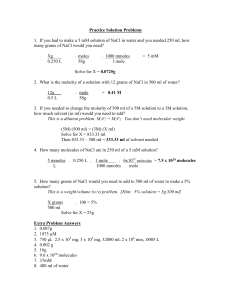PART A: Percent solutions - Bio-Link
advertisement
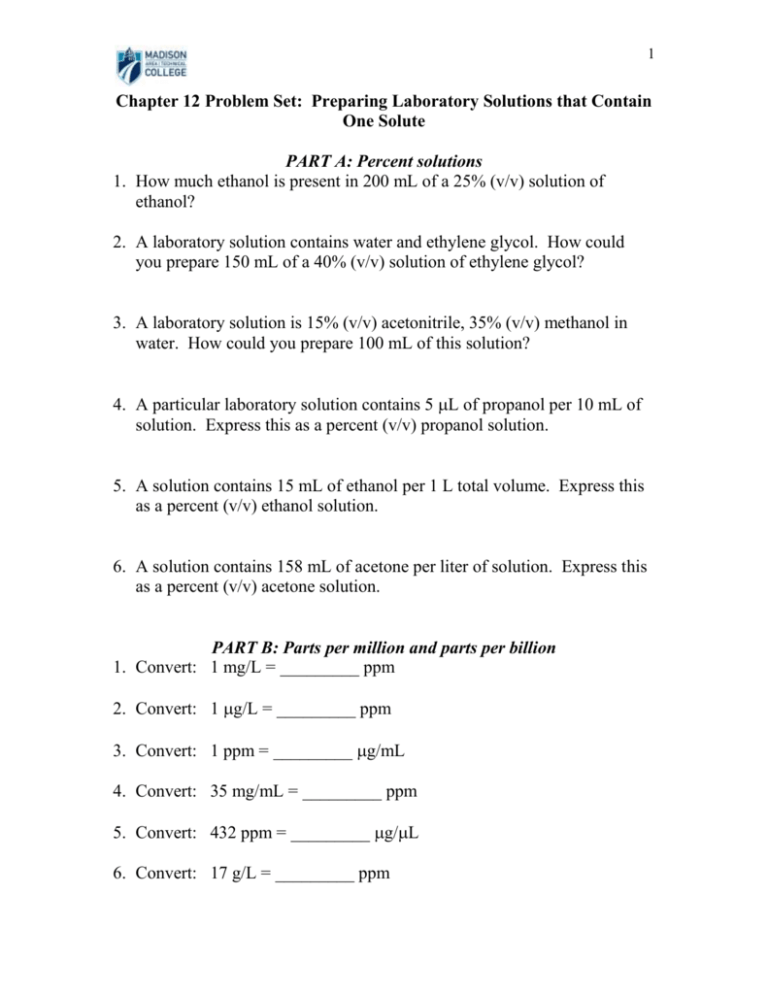
1 Chapter 12 Problem Set: Preparing Laboratory Solutions that Contain One Solute PART A: Percent solutions 1. How much ethanol is present in 200 mL of a 25% (v/v) solution of ethanol? 2. A laboratory solution contains water and ethylene glycol. How could you prepare 150 mL of a 40% (v/v) solution of ethylene glycol? 3. A laboratory solution is 15% (v/v) acetonitrile, 35% (v/v) methanol in water. How could you prepare 100 mL of this solution? 4. A particular laboratory solution contains 5 L of propanol per 10 mL of solution. Express this as a percent (v/v) propanol solution. 5. A solution contains 15 mL of ethanol per 1 L total volume. Express this as a percent (v/v) ethanol solution. 6. A solution contains 158 mL of acetone per liter of solution. Express this as a percent (v/v) acetone solution. PART B: Parts per million and parts per billion 1. Convert: 1 mg/L = _________ ppm 2. Convert: 1 g/L = _________ ppm 3. Convert: 1 ppm = _________ g/mL 4. Convert: 35 mg/mL = _________ ppm 5. Convert: 432 ppm = _________ g/L 6. Convert: 17 g/L = _________ ppm 2 PART C: Molarity 1. If the concentration of a solute in a solution is 2.00 X 10-3 moles/liter, how many moles are there in 500 mL of this solution? 2. If a solute has a concentration of 0.1 moles/L, how much solute is present in 10 mL of solution? 3. You add 29.2 g of NaCl to a total volume of 1L. Express the final concentration of this solution in terms of molarity. (FW of NaCl = 58.44) 4. You add 12.0 g of NaCl to a total volume of 1L. Express the final concentration of this solution in terms of molarity. (FW of NaCl = 58.44) 5. You add 58.4 g of NaCl to a total volume of 500 mL. Express the final concentration of this solution in terms of molarity. (FW of NaCl = 58.44) 6. You add 40.0 g of NaCl to a total volume of 500 mL. Express the final concentration of this solution in terms of molarity. (FW of NaCl = 58.44) 7. How much KCl is present in 250 mL of a 100 mM solution? (FW of KCl = 74.55) 8. How much CaCl2 is required to make up 150 mL of 800 M CaCl2? (FW of CaCl2 = 111.0) 3 PART D: Weight/volume solutions 1. Enzymes are proteins that catalyze chemical reactions in biological systems. Enzymes are rated on the basis of how active they are, or how quickly they can catalyze reactions. Every preparation of enzyme has a certain activity expressed in units of activity. Suppose you buy a vial of an enzyme called -galactosidase. The vial is labeled: 100 mg solid; 5000 Units/mg How many units are present in the vial? 2. A vial of the enzyme horseradish peroxidase is labeled: 250 mg solid; 200 Units/mg How many units are present in this vial?
